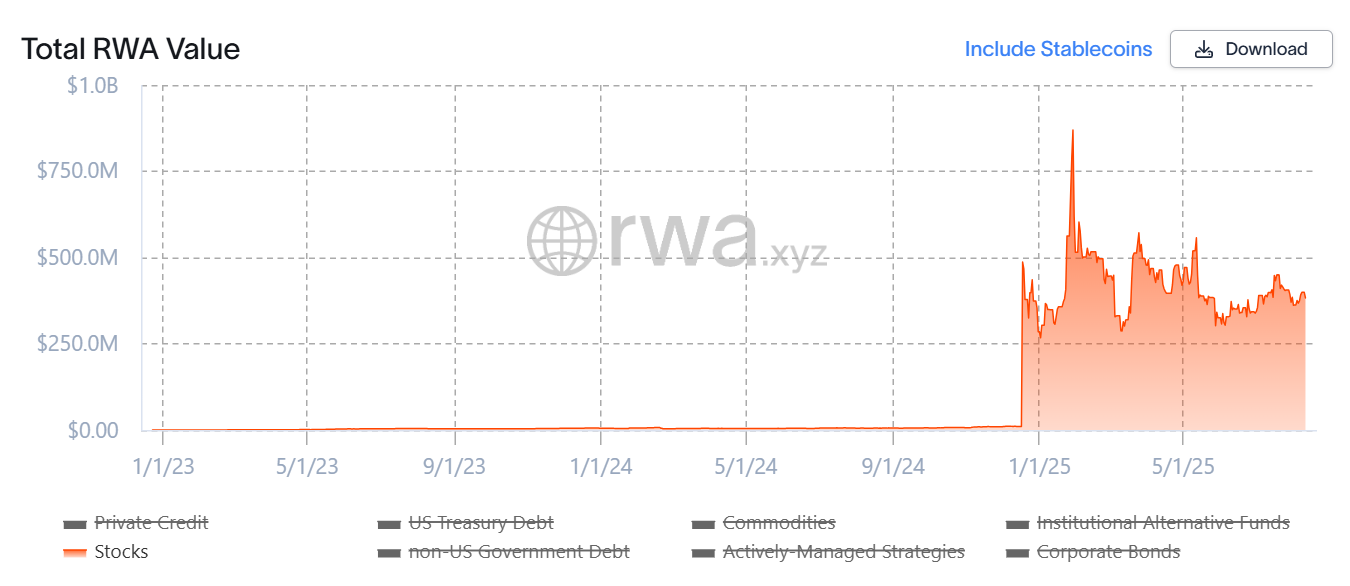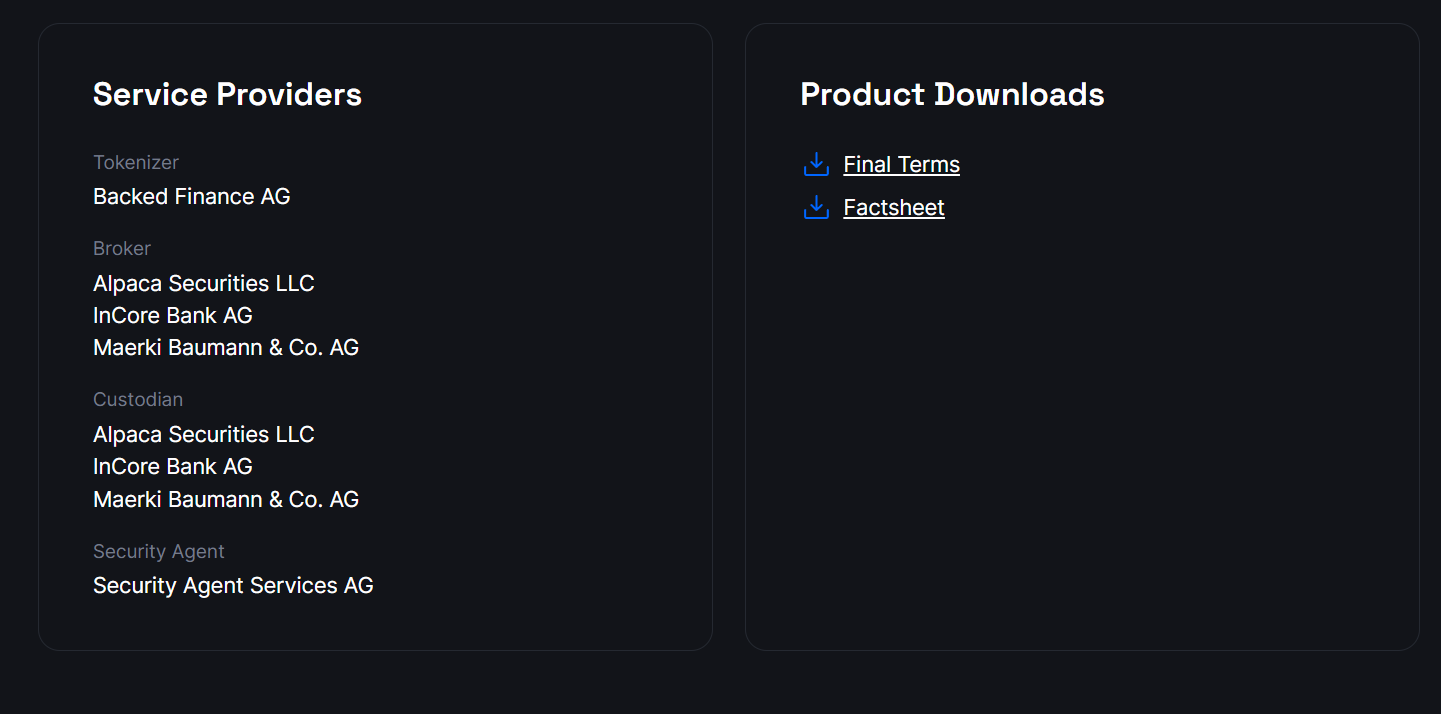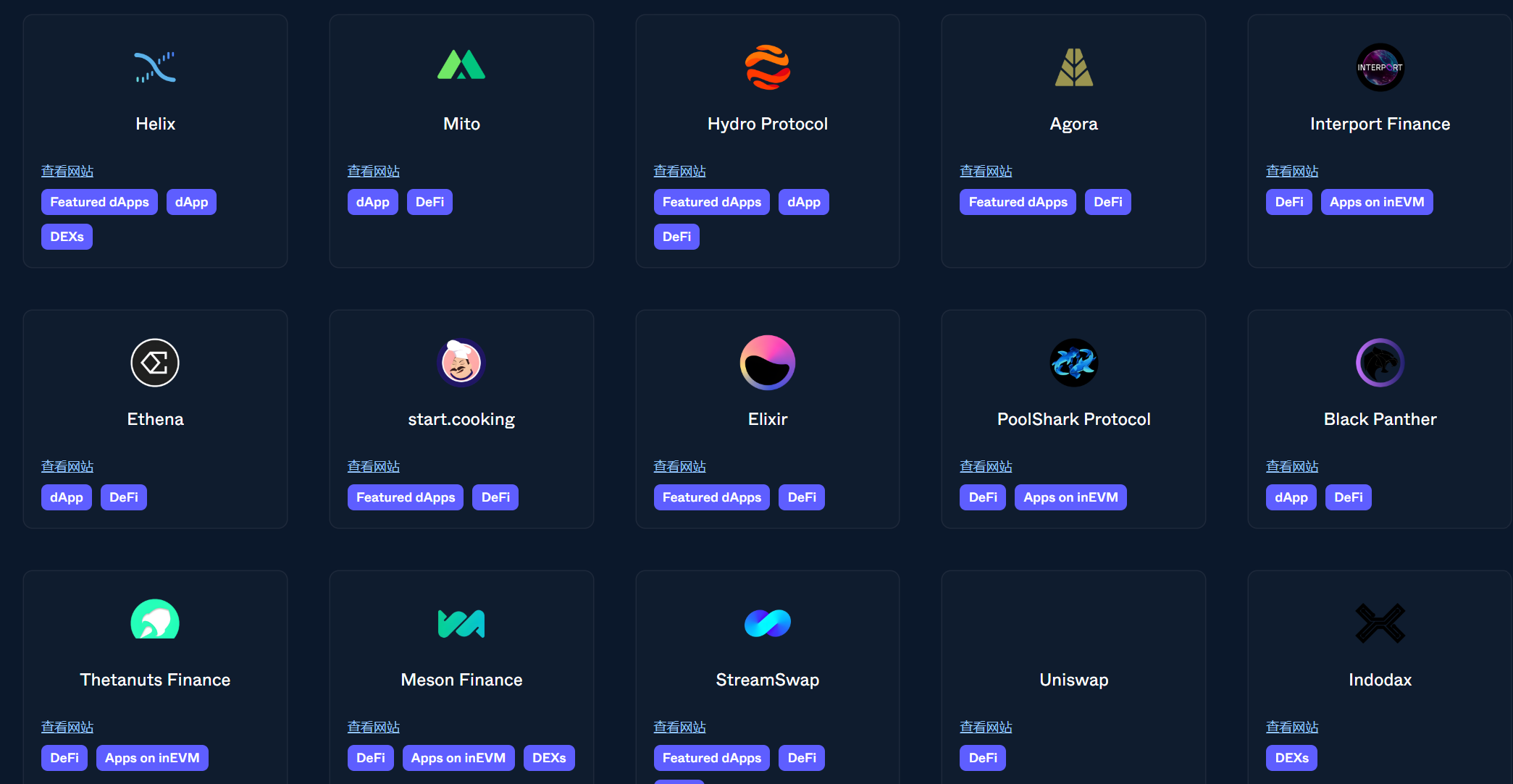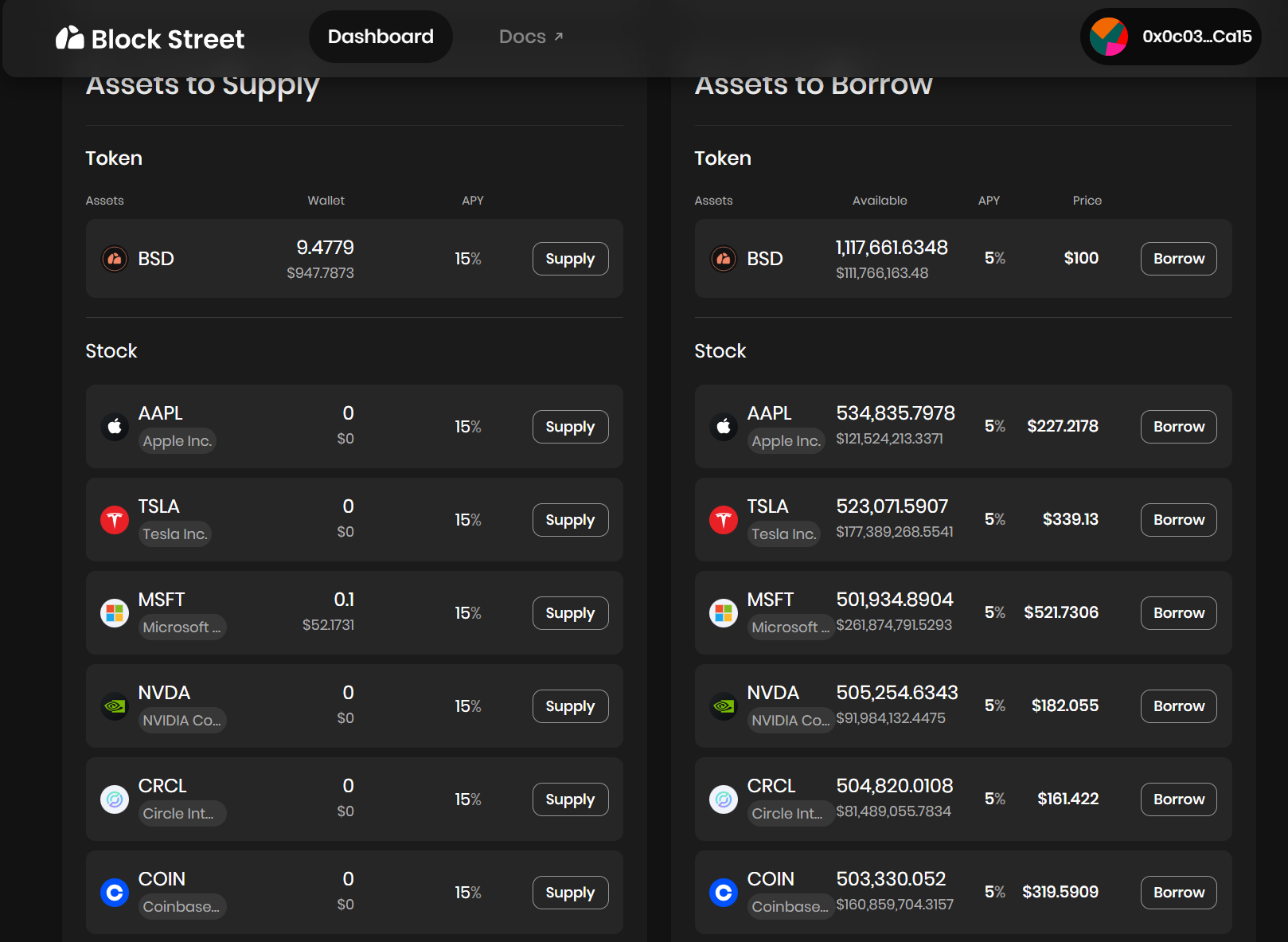Panorama of stock tokenization: from real stock custody to derivatives, how to open up the last mile?
Written by: imToken
Stock tokenization is becoming the best narrative for TradFi and Web3 convergence in 2025.
rwa.xyz data shows that since the beginning of this year, the scale of equity tokenized assets has jumped from almost zero to hundreds of millions of dollars, behind which equity tokenization is accelerating from concept to implementation - it has experienced the evolution of the model from synthetic assets to real stock custody, and is extending to higher-order forms such as derivatives.
This article will briefly sort out the evolution of stock tokenization models, take stock of core projects, and look forward to their potential development trends and pattern changes.

Source: rwa.xyz
1. The past and present of U.S. stock tokenization
What is stock tokenization?
In simple terms, it is to map traditional stocks into digital tokens through blockchain technology, each token represents a portion of ownership of the underlying assets, which can be traded on the chain 24×7 hours a day, breaking through the time and geographical limitations of traditional stock markets and allowing global investors to participate seamlessly.
If we look at it from the perspective of tokenization, the tokenization of US stocks is actually not a new concept (read "Behind the "Stock Tokenization" Boom: The Evolution Roadmap of the Tokenization Narrative"), after all, as early as the last cycle, representative projects such as Synthetix and Mirror have explored a complete set of on-chain synthetic asset mechanisms
This model not only allows users to mint and trade "US stock tokens" such as TSLA and AAPL through over-collateralization (such as SNX, UST), but also covers fiat currencies, indices, gold, and crude oil, including almost all tradable assets.
For example, users can stake $500 in crypto assets (such as SNX, UST), and then mint synthetic assets (such as mTSLA, sAAPL) that anchor the asset price and trade them.
However, this model does not really own the corresponding stocks, but only "bets" on the price, which means that once the oracle fails or the collateral asset thunderstorms (Mirror falls on the collapse of UST), the entire system will face the risk of liquidation imbalance, price de-anchoring, and user confidence collapsing.

Source: Mirror
And the biggest difference in this wave of "U.S. stock tokenization" craze, It adopts the underlying model of "real share custody + mapping issuance", which is currently mainly divided into two paths, and the core difference is only whether it has issuance compliance qualifications:
-
The first is the "third-party compliant issuance + multi-platform access" model represented by Backed Finance (xStocks) and MyStonks, in which MyStonks cooperates with Fidelity to achieve 1:1 pegging of real stocks, and xStocks purchases shares through Alpaca Securities LLC and other companies and custody them;
-
the other is Robinhood-style licensed brokerage self-operated closed-loop, relying on its own brokerage license to complete the entire process from stock purchase to on-chain token issuance.
From this perspective, the key advantages of this round of stock tokenization boom are that the underlying assets are authentic and verifiable, have higher security and compliance, and are easier to be recognized by traditional financial institutions.
2. Representative project inventory: from the upstream and downstream ecology from issuance to trading
From the perspective of operation architecture, a well-functioning tokenized stock ecology actually needs to include at least the infrastructure layer (public chain, oracle and settlement system), the issuance layer (each issuer), the trading layer (CEX/DEX, lending and other derivative trading platforms) and other layers, lacking any layer, It is difficult for the ecosystem to achieve safe issuance, effective pricing, and efficient transactions.
Around this framework, we can see that the main players in the current market are laying out around different links. Considering that the infrastructure (such as public chains, oracles, and settlement networks) is relatively mature, the issuance and trading links are the main battlefields of tokenized stock competition, so this article will focus on these representative projects that directly affect user experience and market liquidity.
Ondo Finance: The securitization extension of the RWA leader
First of all, Ondo Finance, as the leading project in the RWA tokenization track, was originally positioned as a tokenization platform for on-chain bonds and treasury bonds, and as of the time of publication, Ondo Finance still firmly occupies the core position in the top ten in the RWA tokenization track, relying on the two flagship products of US Treasury bonds, USDY and OUSG.

Source: rwa.xyz
However, since last year, Ondo Finance has tried to expand its territory to the stock market, including cooperating with regulated custodians and clearing institutions such as Anchorage Digital to securely custody real US stocks and issue tokenized assets in equal amounts on the chain.
And last month, Ondo Finance also planned to launch a $250 million fund with Pantera Capital to support RWA projects, which Ondo chief strategy officer Ian De Bode said would be used to acquire equity and tokens in emerging projects.
Injective: A public chain tailored for financial RWAs
Injective has always been positioned as "financial infrastructure" as its core positioning, and is one of the public chains focusing on high-performance financial applications.
Up to now, the Injective ecosystem has aggregated over 200 projects, covering various fields such as decentralized exchanges (Helix, DojoSwap), on-chain lending (Neptune), RWA platforms (Ondo, Mountain Protocol), and NFT marketplaces (Talis, Dagora).
In the RWA track, Injective's advantages are mainly reflected in two aspects:
-
Wide coverage of asset categories: Injective ecological projects represented by Helix have supported the trading of various tokenized assets, including US technology stocks, gold, and foreign exchange, expanding the asset pedigree of RWAs on the chain;
-
Direct Connectivity with Traditional Finance: Injective has established cooperation with well-known financial institutions such as Coinbase, Circle, Fireblocks, WisdomTree, and Galaxy, opening up a closed-loop process from off-chain custody and clearing to on-chain mapping and trading.
Thanks to this positioning, Injective is more like a public chain base exclusive to RWA, providing issuers with stable compliance landing and asset management channels, providing a high-speed and low-cost execution environment for trading platforms and aggregation tools, and laying the foundation for the derivativeization and combination of stock tokenization in the future.

Source: Injective
MyStonks: The pioneer of on-chain U.S. stock liquidity
As a pioneer in this wave of U.S. stock tokenization field, many users should have been exposed to tokenized U.S. stocks issued by MyStonks on the chain. It is also a partnership with Fidelity to ensure that on-chain token assets are fully pegged to real shares.
In terms of trading experience, MyStonks uses the Order Flow Payment (PFOF) mechanism to route the order flow to professional market makers for matching, thereby significantly reducing slippage and transaction costs, and improving the speed and depth of order execution. For ordinary users, this means that when trading US stocks on the chain, they can enjoy liquidity close to traditional brokerages while retaining the advantages of round-the-clock trading.
It is worth mentioning that MyStonks does not limit itself to on-chain spot trading, but is actively expanding diversified financial services such as derivatives, lending, and staking.
Backed Finance: A cross-market compliance expander
Unlike MyStonks, which focuses on US stocks, Backed Finance's layout has a cross-market and multi-asset perspective from the beginning, and one of the highlights is that the compliance model is highly aligned with the European MiCA regulatory route.
The team conducts business based on the Swiss legal framework, strictly adheres to local financial regulatory requirements, issues fully anchored tokenized securities on-chain, and establishes a stock purchase and custody system with partners such as Alpaca Securities LLC to ensure a 1:1 mapping relationship between on-chain tokens and off-chain assets.
In terms of asset range, Backed Finance not only supports the tokenization of US stocks, but also covers ETFs, European securities, and specific international index products, providing global investors with multi-market, multi-currency, and multi-target investment options, which means that investors can simultaneously allocate US technology stocks, European blue chips, and global commodity ETFs on the same on-chain platform, thus breaking the geographical and time constraints of traditional markets.
Block Street: A Liquidity Release Provider for Tokenized Stocks
As one of the few DeFi protocols currently focusing on tokenized stock lending, Block Street is aiming at a more downstream and potentially explosive liquidity release direction.
Taking Block Street as an example, it provides on-chain collateral and lending services directly to holders - users can transfer TSLA. M、CRCL. M and other tokenized US stocks are directly deposited into the platform as collateral, and stablecoins or other on-chain liquid assets are obtained according to the collateral ratio, realizing the capital utilization model of "assets are not sold, liquidity is in hand".
Block Street just launched a beta version last week, allowing you to experience the conversion of tokenized stocks into liquid capital, allowing holders to release funds without selling assets, which can be regarded as filling the gap in the field of DeFi lending of tokenized stocks.

Source: Block Street
How to further demolish the fence?
Objectively speaking, the biggest progress in the tokenization of US stocks under this new wave of craze is the "real stock custody" model + the dimension of eliminating the entry threshold:
any user only needs to download a crypto wallet and hold a stablecoin, and can directly buy US stock assets through DEX anytime and anywhere, bypassing the account opening threshold and identity review - no US stock account, no time difference, no geographical and identity restrictions.
However, the problem is that most of the current products are still the first step in focusing on the issuance and trading layer, and are still in the initial stage of digital certificates, and have not truly transformed them into on-chain financial assets that can be widely used for trading, hedging and fund management, which means that they are obviously insufficient in attracting professional traders, high-frequency funds and institutional participation.
This is a bit like ETH before DeFi Summer, when it could not lend, pledge, or participate in DeFi, until protocols such as Aave gave it functions such as "collateral lending" to release hundreds of billions of liquidity.
Therefore, if the first curve of the tokenized U.S. stock market is the growth of transaction scale, then the second curve is to improve the capital utilization rate and on-chain activity of tokenized stocks through the expansion of financial instruments.
Under this logic, in addition to the instant buying and selling of tokenized stocks, derivatives trading with a richer "trading layer" is particularly crucial—whether it's DeFi lending protocols like Block Street, or short-selling tools, options, and structured products that support inverse positions and risk hedging in the future.
The core is who can first create products with strong composability and good liquidity, and who can provide an integrated on-chain experience of "spot + short + leverage + hedging", such as allowing tokenized US stocks to be used as collateral to complete fund lending in Block Street, constructing new hedging targets in option protocols, and forming a portfolio of composable assets in stablecoin protocols.
In general, the significance of stock tokenization is not only to move US stocks and ETFs to the chain, but also to open up the "last mile" between the real world capital market and the blockchain:
from Ondo on the issuance layer, to MyStonks and Backed Finance for trading and cross-market access, to Block Street for liquidity release. This track is gradually building its own underlying infrastructure and ecological closed loop.
Wheninstitutional funds accelerate their entry into the market, on-chain trading infrastructure continues to improve, and tokenized U.S. stocks become composable, tradable, and collateralized living assets, stock tokenization is undoubtedly expected to become the largest and most incremental asset class in the RWA track.
